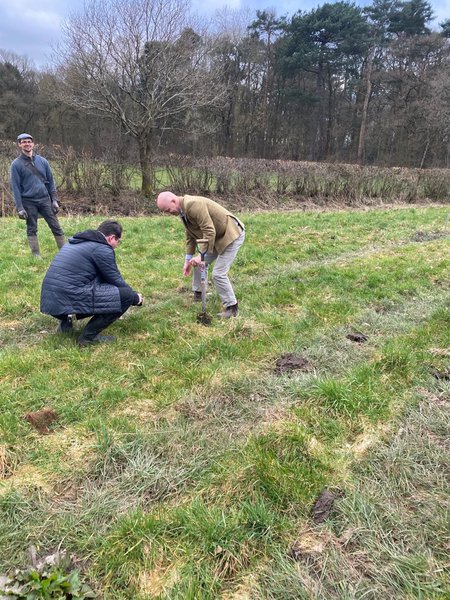Innovative woodland creation
Natalie Oakes finds out more about a CLA member’s bespoke approach to woodland creation and the benefits of collaborating with local businesses
East Cheshire’s largest landowner is implementing innovative and bespoke approaches to woodland creation to offset its carbon footprint. The Tatton Estate spans 5,000 acres of land south of Greater Manchester. The estate, which includes a National Nature Reserve and a Site of Special Scientific Interest, has been under the stewardship of the Brooks family since 1958 when it was separated from Tatton Hall and Park, which were gifted to the National Trust.
Managed by land agents Fisher German, the estate has several diversification projects, including a wedding and events venue and short lets; it is also a well-known TV and film venue in its own right. More recently, the estate team has been exploring new approaches to woodland creation.
A key role of the trustees and the Brooks family, as stewards of the estate, is not just to protect and conserve but also enhance the estate and its wider communities so that it can be passed on to the next generation.
Woodland creation
Over the next few years, emerging natural capital and green investment opportunities will be important in creating new revenue streams for landowners and farmers due to the agricultural transition in England.
As a key stakeholder, the estate was keen to support the local climate emergency motions. Through involvement with its Local Enterprise Partnership, the team worked collaboratively with industries wishing to reach carbon zero.
Working with local business EA Technology, which was looking to support Cheshire and Warrington’s road map to net zero by investing in new woodland creation, and the Mersey Forest Partnership, the group identified a suitable 32-acre site.
The new plantation links Square Wood on the Tatton Estate with woodland at the adjoining Tatton Park, which creates new wildlife corridors and enhanced biodiversity and will offset 1,600 tonnes of carbon over the next 25 years.

Trees for Climate
The Mersey Forest Partnership is one of 13 Community Forest in England that works with landowners and businesses to create woodland, bringing value to the land and local environment. The estate approached it for advice and accessed the Trees for Climate programme - one of the most competitive grants available for tree planting.
Working with its advisers helped simplify the process, and extra support was given on planting, design and registering for Woodland Carbon credits. Community Forest grants can cover up to 100% of agreed costs and can provide 15 years of maintenance payments, ensuring that any planting continues to deliver long-term value. However, in areas of high land value, the economic case for changing land use from rough grazing to forestry may not be viable without securing additional revenue streams through carbon credits.
As one of the first planting schemes, the Mersey Forest team was keen to understand the economics and viability for landowners, and so it became a joint objective to create an evidence-based case study that could inform and stimulate other business and landowner collaborations.
Partnering with local businesses such as EA Technology helped create a collaborative process with aligned objectives and values. EA Technology recognises the value of investing in ‘insetting’ carbon locally, and its staff are proud to work for an organisation that helps deliver climate change mitigation and enhance the environment. A key driver for the company in delivering the pilot was to show how industry and landowners can work together in a way that is economically and environmentally sustainable for all.
Finding opportunities
It became an objective to create an evidence-based case study that could inform and stimulate other business and landowner collaborations
Tatton Estate recognises that there are increasing and competing demands on the land, food, nature, public access and renewables. This has created opportunities to work with other businesses and stakeholders to recirculate funding and support nature restoration through tree-planting.
The woodland creation pilot was the catalyst for other nature restoration, wetland and habitat creation projects on the estate. The planting scheme and the wetland creation projects were developed and funded with support from Natural England. Tatton Estate has hosted many government and stakeholder visits, including local school children and volunteers, which has attracted further business collaborations and investments.
Being able to demonstrate real sustainability credentials is an increasingly important part of attracting investment and clients for the future
Along with the Mersey Forest team, the estate continues to look at grants and has already identified areas that could benefit from planting. Engagement with tenant farmers has also been undertaken to find additional tracts of land that would benefit from planting schemes, including hedgerow trees.